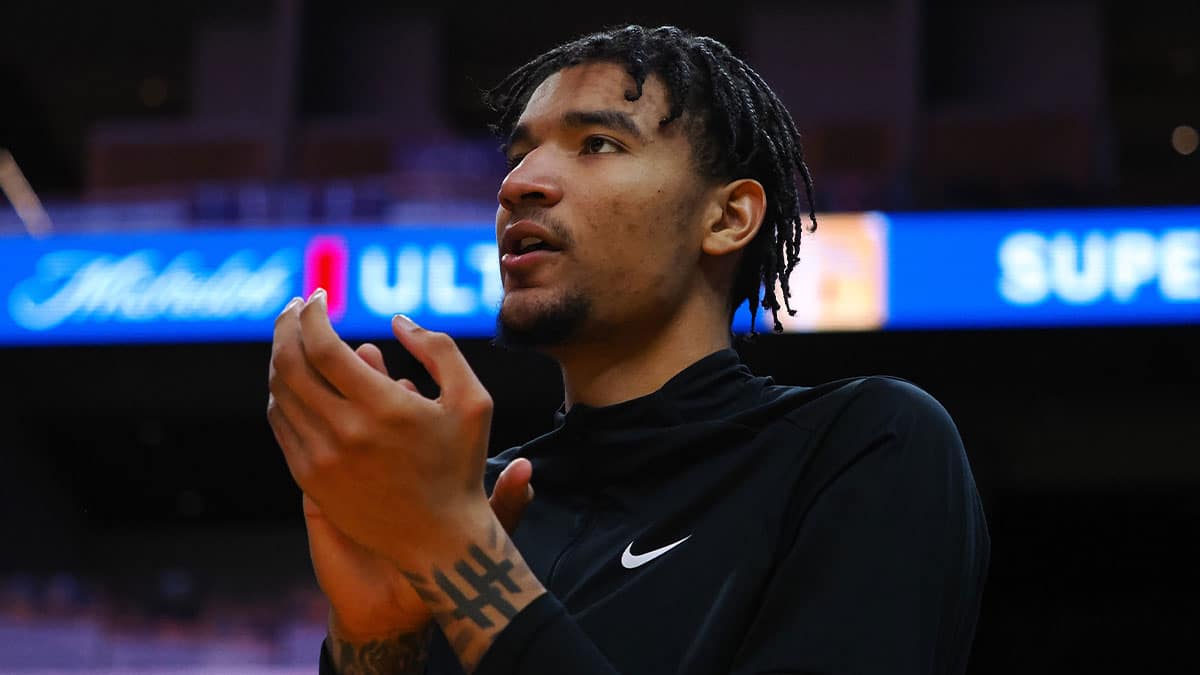In the 2024 NBA Draft, the Miami Heat made a pivotal decision by selecting 7-foot center Kel’el Ware from Indiana with the 15th pick. Last season at Indiana, Ware had impressive stats, averaging 15.9 points, 9.9 rebounds, and 1.9 blocks per game, shooting 58.6% from the field and 42.5% from three. Kel'el Ware's solid performance continued into the NBA 2K25 Summer League, where he played a crucial role in the Heat's championship run, notching 18 points, 8.3 rebounds, and 1.5 blocks per game, while his field shooting percentage rose to 61.8%.
Despite these promising statistics, Ware's transition into the NBA raises some concerns, particularly regarding his three-point shooting. While his college three-point shooting percentage appears strong at 42.5%, it's important to note this was derived from a relatively low volume, making only 17 of 40 attempts. Over his two-year college career, Ware’s three-point shooting average was 33.7%—a respectable figure for a center but perhaps not convincing enough to secure a starting role immediately.
Evaluating Miami Heat rookie Kel'el Ware’s role post-NBA 2K25 Summer League success
The potential shift in the Heat’s lineup involves current center Bam Adebayo's expressed interest in moving to the power forward position, which would allow Ware to step into the starting center role. However, this transition might need reassessment given the complexities of NBA play. Miami’s current setup benefits significantly from Nikola Jović’s ability to space the floor. Jović’s 39.9% three-point shooting complements Adebayo and Jimmy Butler, who are not primarily three-point shooters.
This configuration aligns with successful strategies employed by other NBA teams. For example, the Boston Celtics and the Minnesota Timberwolves have effectively utilized pairs of big men who can both threaten from beyond the arc. The Celtics' Kristaps Porziņģis and Al Horford shot 37.5% and 41.9% respectively from three-point range, while the Timberwolves' Karl-Anthony Towns and Naz Reid posted three-point shooting percentages of 41.6% and 41.4%. These figures allow these players to operate effectively alongside another big, such as the Timberwolves’ Rudy Gobert.
Given the current landscape and the strategic setups of successful teams, it seems prudent for the Heat to maintain Ware in a more limited role off the bench as he continues to develop his game. This approach would allow Ware the time to adjust to the NBA's pace and space and to refine his skills without the immediate pressure of starting.
Ware should be gradually integrated into the Heat's lineup

Integrating Ware gradually also provides the Heat with an opportunity to explore different lineup configurations during the season, especially during games where the matchup might favor having two dynamic bigs on the floor. This flexibility could be crucial as the team gauges the effectiveness of various on-court combinations ahead of the playoffs.
While the allure of pairing Adebayo and Ware in the starting lineup is undeniable, especially considering their potential defensive synergy, the reality of NBA gameplay and strategic nuance suggests a more cautious approach might be beneficial.
As the Miami Heat prepare for the upcoming season, the coaching staff's management of Ware's development will be an intriguing storyline to watch. The decisions made could have significant implications not only for Ware’s career trajectory but also for the team's success in the highly competitive Eastern Conference. Ultimately, patience and player development could pave the way for a new era of Heat basketball, anchored by a potentially formidable duo in Adebayo and Ware.
